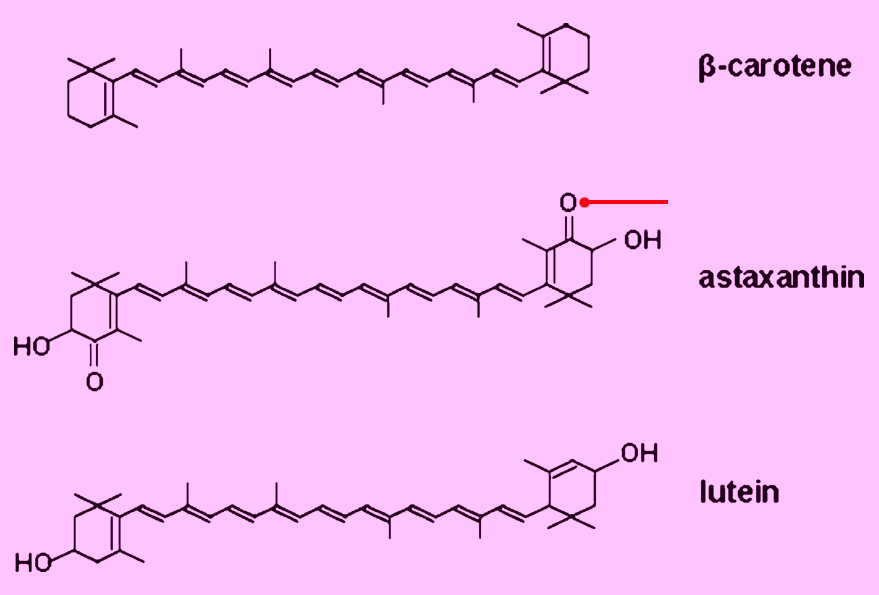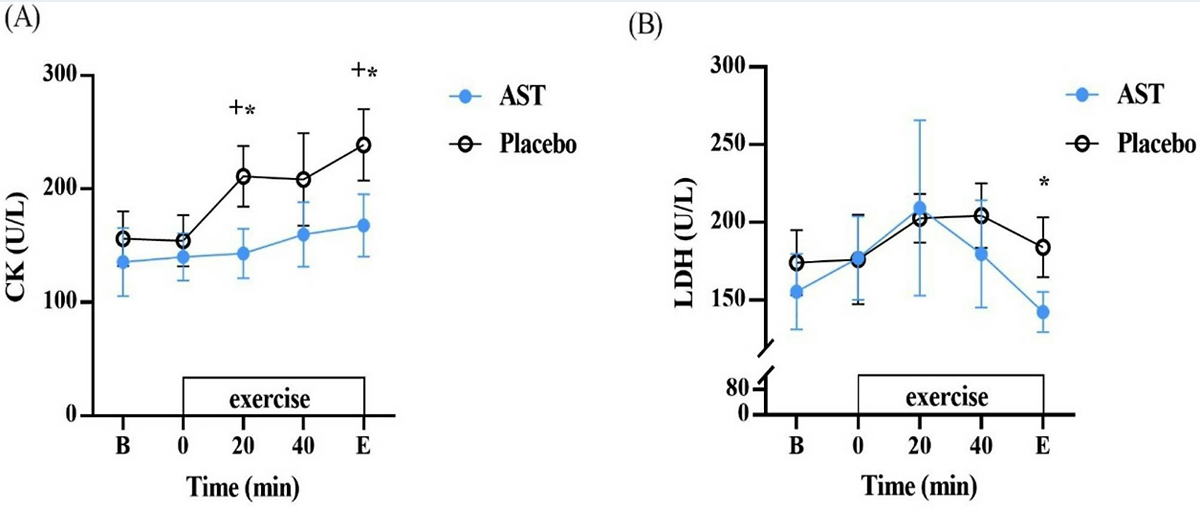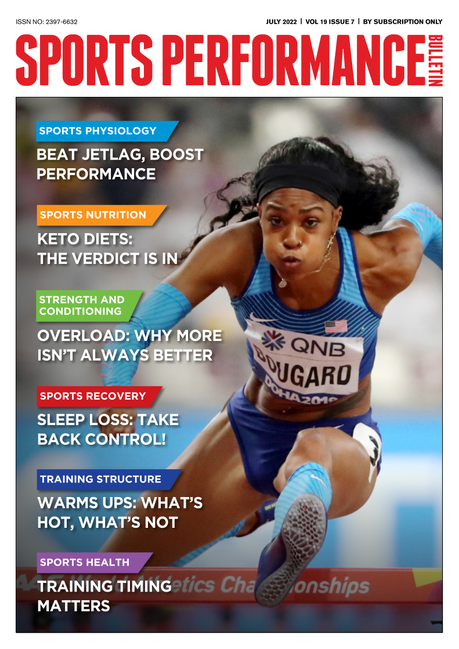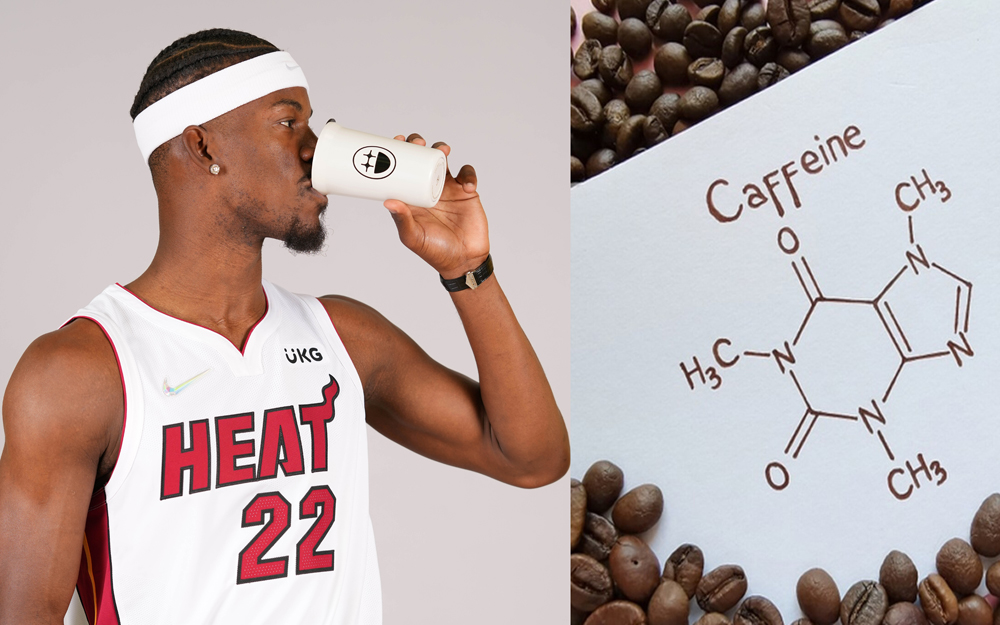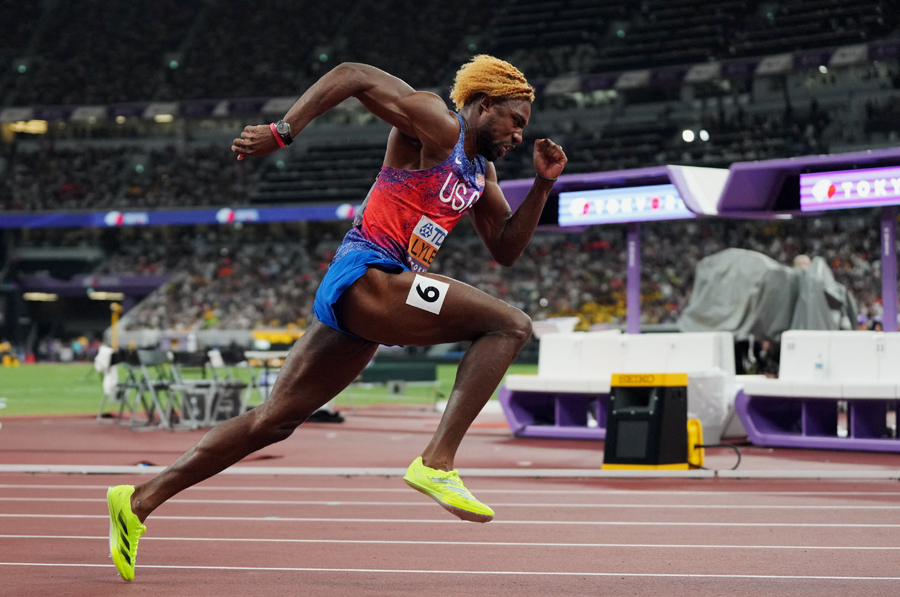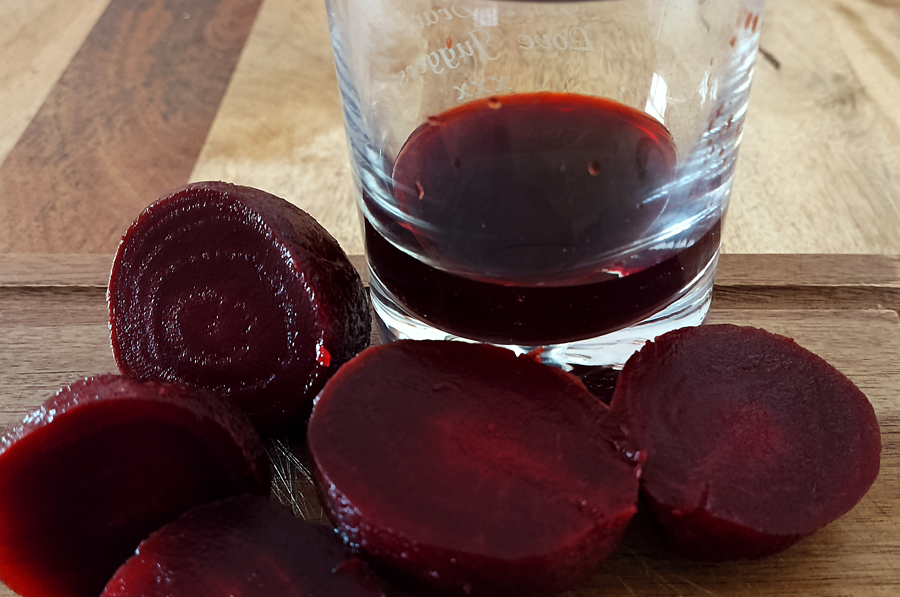You are viewing 1 of your 1 free articles. For unlimited access take a risk-free trial
Astaxanthin: a short, sharp shock for performance
SPB looks at new research on astaxanthin and asks whether short-term, high-dose supplementation is the route to performance benefits
If you don’t love oxygen, you should! Its special reactivity provides us with the energy required to sustain life, including the ability to power movements and muscular contraction. This explains why oxygen metabolism - and the ability to absorb, transport and use it in muscles - is so very important to athletes who are seeking maximum endurance performance. Unfortunately however, there is a downside to oxygen metabolism; the same chemical reactivity that liberates energy during aerobic metabolism can also unleash damage in muscle cells due to the formation of transient but reactive and potentially destructive molecular species called ‘free radicals’, which are produced unavoidably as a consequence of harnessing the chemical energy of oxygen within the body.
Antioxidant defences
In recent years, there has been much research into athletes and muscle damage induced by free radicals. Athletes not only consume more oxygen than others to fuel their training, but also frequently train at or near their maximum oxygen uptakes. Unsurprisingly therefore, they are at increased risk of free radical-induced damage, or ‘oxidative stress’(1,2). Athletes don’t just process a larger volume of oxygen in muscle tissue than their sedentary counterparts – they also process it at a higher rate; during training or competition, the rate of oxygen processing by the mitochondria (the energy producing furnaces in the cells) can rise by a factor of 20, placing exceptionally high demands on their antioxidant defence systems.
Given the importance of optimum muscular performance for athletes, a lot of the research into antioxidant protection for athletes has focused on the ability of antioxidant nutrients to help protect against muscle damage during hard training/competition. This exercise-induced muscle damage often manifests as delayed-onset muscle soreness (DOMS) as well as delayed or reduced recovery from training and competition(3). One class of antioxidant nutrients that has attracted particular interest are the naturally occurring brightly colored plant phytochemicals such as lycopene, flavanols and anthocyanins founds in a wide range of fruits and vegetables (see box 1)(4). Not only do they appear to support (and maybe even enhance) athletic performance, they also confer long-term health benefits.
Box 1: Fruity protection
In addition to antioxidant nutrients such as vitamins C and E, and the mineral selenium, there’s also been a lot of research into fruit phytochemical antioxidant supplementation to enhance athletic performance and recovery. In cyclists for example, black grape (81 grams per litre [g/L]), raspberry (93g/L) and redcurrant (39g/L) concentrates reduced DNA damage compared to cyclists not taking the fruit concentrates(5). Meanwhile, chokeberry juice reduced free radical damage in rowers undergoing strenuous exercise bouts(6) and tart cherry juice was found to reduce muscle damage and DOMS in distance runners performing a 26km (16.2-mile) run(7). Scientists believe that it’s the high levels of various natural phytochemical compounds (eg anthocyanins) found in berries and cherries that make these fruits particularly effective as antioxidants.
Astaxanthin: the fishy antioxidant
While there’s been much focus on vegetable and fruit antioxidants, a rather unusual antioxidant nutrient called ‘astaxanthin’ - has been attracting increasing attention from sports scientists. Although it resembles the plant phytochemical ‘carotene’, which is found in orange and red vegetables such as carrots and tomatoes, astaxanthin is not a plant phytochemical but a dark-red carotenoid-like compound found in aquatic animals such as salmon and shrimp. Like plant phytochemicals, humans cannot synthesize astaxanthin and can only acquire it and benefit from it via dietary intake.
What makes astaxanthin different from many other antioxidants is its special free radical neutralizing activity; its unique molecular structure (see figure 1) gives it an exceptionally high capacity to capture and render harmless free radicals containing oxygen and nitrogen atoms (reactive oxygen nitrogen species)(8). In fact, it turns out that astaxanthin’s antioxidant capacity is much higher than many of the more well known antioxidants that are available in food and taken in supplements; in a 2018 study, researchers compared the antioxidant power of various antioxidant nutrients and found that astaxanthin is actually many times more powerful than that of: tea polyphenols, anthocyanins, glutathione, coenzyme Q10, vitamin C, and vitamin E(9).
Figure 1: Astaxanthin, beta-carotene and lutein*
Astaxanthin belongs to the carotenoid family of compounds and is structurally very similar to beta-carotene and lutein found in orange and red fruits and vegetables, the main difference being the extra oxygen atom (marked by red pointer) on the carbon next to the OH group of lutein.
NB: Image adapted from Mercedes García-González "Outdoor cultivation of microalgae for carotenoid production: Current state and perspectives" Applied Microbiology and Biotechnology 2007. 74. 1163-74
Astaxanthin and athletes
Given its very powerful antioxidant properties, it’s not surprising to discover that astaxanthin has become a focus of research as a performance-enhancing supplement for athletes. However, the findings taken as a whole so far have been inconclusive – principally because these studies used such a wide range of dosing regimens, study designs and outcome measures (ie what kind of things were measured – eg fat loss, amount of DOMS, aerobic performance etc)(10-15). In a previous SPB article, we looked at research on astaxanthin supplementation in distance runners performing 2+ hour runs including long downhill sections designed to induce muscle damage(16). The unexpected finding was that supplemental astaxanthin did not seem to reduce muscle inflammation and soreness after hard or prolonged training, but it DID exert a powerful ‘immune protecting’ effect by helping to offset the normal post-exercise decline in immunity that is so often seen in athletes.
New research
One reason for the mixed results in athletes taking astaxanthin supplements is that without any standardized protocol, the supplemental doses used and the duration of supplementation in previous trials have been wildly different. In the studies referenced above, the total dose of astaxanthin given during the trial ranged from 84 to 560mg, while the duration of these trials ranged from seven to 90-days. Daily doses have ranged from 4mg to 20mg per day. To try and add some extra understanding about the value or otherwise of astaxanthin supplementation, a team of Taiwanese researchers has taken a new approach by experimenting with a short-term, high dose(17).
Just published in the journal ‘BMC Sports Science, Medicine and Rehabilitation’, this study investigated the short-term (4-day time-frame) effect of astaxanthin at a high daily dose (28mg) on cycling performance, physiological changes, and mood profile in adults. Ten recreationally trained young male adults were recruited for the study. Following baseline testing to assess maximum oxygen uptake (VO2max) the participants were randomised to one of two groups:
· Astaxanthin – 28mg per day for four days taken after breakfast.
· Control – no supplemental astaxanthin given.
On day #4, participants performed an exhaustive cycling challenge at 75% maximum rate of their VO2max, and the time to exhaustion (TTE) was recorded. Blood and gaseous samples were collected before, during, and immediately after cycling to determine any changes in muscle damage, inflammation, oxidative stress, and substrate utilization.
There then followed a week ‘washout’ period where no supplements were taken then the trial was repeated but the groups crossed over; ie those who had taken astaxanthin now took placebo and vice-versa. [NB: using a crossover design in a trial makes the findings much more robust because each participant can serve as their own control, thus eliminating inter-individual variability.] The overall study protocol is shown in figure 2. During both the first and the second (crossed over) trials, the participants were instructed to perform no strenuous exercise, stick to a standardized diet and use no antioxidant supplements.
Figure 2: Astaxanthin crossover study protocol
What they found
Once the data from the two conditions (astaxanthin/no astaxanthin) had been gathered, it was statistically analyzed to see what, if any, difference astaxanthin supplementation had made. The first key finding was that cycling performance in terms of time to exhaustion (TTE) was very significantly longer with astaxanthin supplementation (85.41 minutes) than with placebo (72.11 minutes. Moreover, this longer TTE effect in the astaxanthin condition was seen in nearly all the participants, adding further weight to the findings (remember, each participant served as own control thanks to the crossover design of the trial).
The researchers speculated that the increased cycling time with astaxanthin might be attributed to its protective role against muscle damage or oxidative stress induced by the exhaustive exercise challenge and the findings from blood samples taken backed up this speculation. Exhaustive exercise-induced muscle damage, indicated by increased creatine kinase (CK) and lactate dehydrogenase (LDH) release, was significantly decreased by astaxanthin (see figure 3). Also, a significant time effect for reduced CK in astaxanthin condition was seen – ie the longer the astaxanthin trial went on, the less CK accumulated in the blood of the participants compared to the placebo trial. Finally, lipid peroxidation (damage to the lipid membranes of cells (measured by a marker known as malondialdehyde) during and immediately after exercise, was substantially inhibited by astaxanthin supplementation.
Figure 3: Creatine kinase and lactate dehydrogenase in astaxanthin vs. placebo
Left graph = creatine kinase; right graph = lactate dehydrogenase. Blue plots = astaxanthin condition; black plots = placebo condition. Levels of both these muscle damage markers were reduced by astaxanthin supplementation. In the case of CK, the protective effect of astaxanthin grew steadily larger as the exercise trial progressed.
Practical advice for athletes
This is the first human study to demonstrate the ergogenic effect of short-term, high dose supplementation of astaxanthin (28mgs per day for four days) on high-intensity and exhaustive cycling performance. Even better, the astaxanthin supplementation significantly decreased exercise-induced muscle damage, as shown by decreased CK levels during and immediately after cycling and decreased LDH levels immediately after cycling. This protective effect against free-radical induced damage extended to cell walls where less lipid peroxidation was observed. Of course, we should point out that even allowing for its randomized crossover design, this is just one study. To be completely confident about this short-term high-dose effect, it would be good see similar findings from some larger studies.
At this point, you’re probably wondering if you should consider astaxanthin supplementation? The answer based on this latest research is ‘maybe’. If you have a specific event in mind that involves working very intensely for half an hour or more, the evidence suggests that a 4-day supplementation program of 28mgs per day of astaxanthin in the run-up to that event could produce significant performance benefits. However, when it comes to supporting day-to-day training over the longer term, or participating in less intense events, the jury is still out on astaxanthin for performance when taken at lower doses (although there may be health benefits). If you do decide to experiment with a short-term burst of astaxanthin, use the 28mg per day dose suggested above and take it with food – for example after breakfast for four days immediately before your event. The good news is that even if you don’t experience a performance lift, astaxanthin is relatively cheap and there are no known side effects from short its term use!
References
1. Int J Food Sci Nutr. 2013 May;64(3):312-26
2. Exerc Immunol Rev. (2017) 23:8–50
3. Front Physiol. 2018 Apr 26;9:403
4. J Am Coll Nutr. 2011 Oct;30(5):285-94
5. Eur J Appl Physiol. 2005 Dec;95(5-6):543-9
6. Int J Sport Nutr Exerc Metab 2005. 15(1): 48-58
7. J Int Soc Sports Nutr. 2010 May 7;7(1):17
8. Food Chem. (2021) 343:128497
9. Pharmacol Res. 2018;136:1–20
10. Int J Sport Nutr Exerc Metab. (2022) 32:8–15
11. Front Nutr. (2018) 4:76
12. Front Sports Act Living. (2019) 1:17
13. PLoS One. (2013) 8:e79280
14. J Sports Med Phys Fitness. (2012) 52:382–92
15. Phytother Res. (2013) 27:1536–42
16. Front Nutr. 2023; 10: 1143385. Published online 2023 Mar 21
17. BMC Sports Sci Med Rehabil. 2025 Jul 4;17:180
Newsletter Sign Up
Testimonials
Dr. Alexandra Fandetti-Robin, Back & Body Chiropractic
Elspeth Cowell MSCh DpodM SRCh HCPC reg
William Hunter, Nuffield Health
Newsletter Sign Up
Coaches Testimonials
Dr. Alexandra Fandetti-Robin, Back & Body Chiropractic
Elspeth Cowell MSCh DpodM SRCh HCPC reg
William Hunter, Nuffield Health
Keep up with latest sports science research and apply it to maximize performance
Today you have the chance to join a group of athletes, and sports coaches/trainers who all have something special in common...
They use the latest research to improve performance for themselves and their clients - both athletes and sports teams - with help from global specialists in the fields of sports science, sports medicine and sports psychology.
They do this by reading Sports Performance Bulletin, an easy-to-digest but serious-minded journal dedicated to high performance sports. SPB offers a wealth of information and insight into the latest research, in an easily-accessible and understood format, along with a wealth of practical recommendations.
*includes 3 coaching manuals
Get Inspired
All the latest techniques and approaches
Sports Performance Bulletin helps dedicated endurance athletes improve their performance. Sense-checking the latest sports science research, and sourcing evidence and case studies to support findings, Sports Performance Bulletin turns proven insights into easily digestible practical advice. Supporting athletes, coaches and professionals who wish to ensure their guidance and programmes are kept right up to date and based on credible science.

